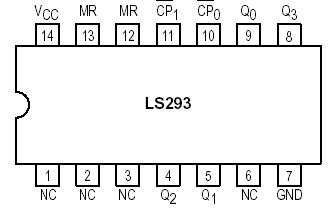SN54/74LS293: PinoutDescriptionThe LS290 and LS293 are 4-bit ripple type Decade, and 4-Bit Binary counters respectively. Each device consists of four master/ slave flip-flops which are internally connected to pro...
floor Price/Ceiling Price
- Part Number:
- SN54/74LS293
- Supply Ability:
- 5000
Price Break
- Qty
- 1~5000
- Unit Price
- Negotiable
- Processing time
- 15 Days
SeekIC Buyer Protection PLUS - newly updated for 2013!
- Escrow Protection.
- Guaranteed refunds.
- Secure payments.
- Learn more >>
Month Sales
268 Transactions
Payment Methods
All payment methods are secure and covered by SeekIC Buyer Protection PLUS.

 SN54/74LS293 Data Sheet
SN54/74LS293 Data Sheet








